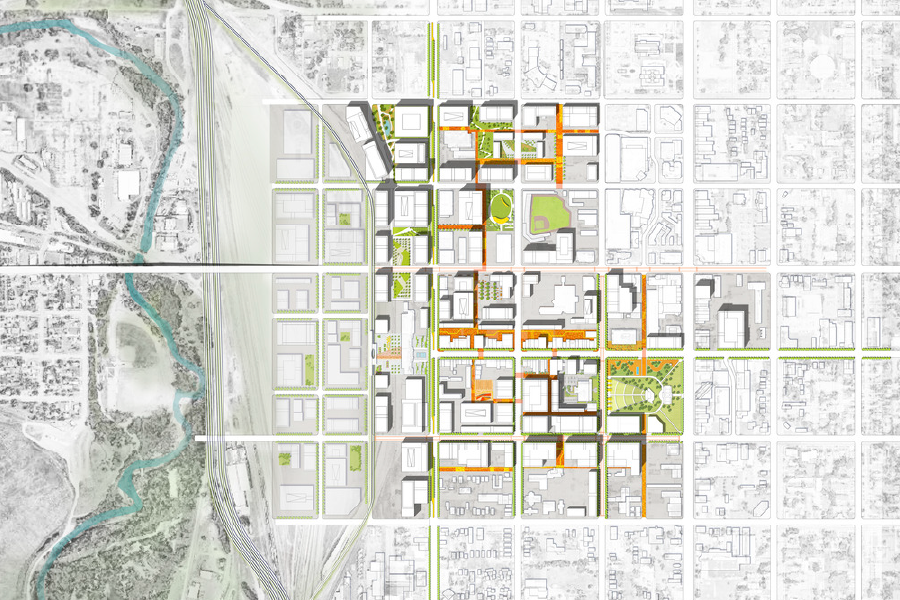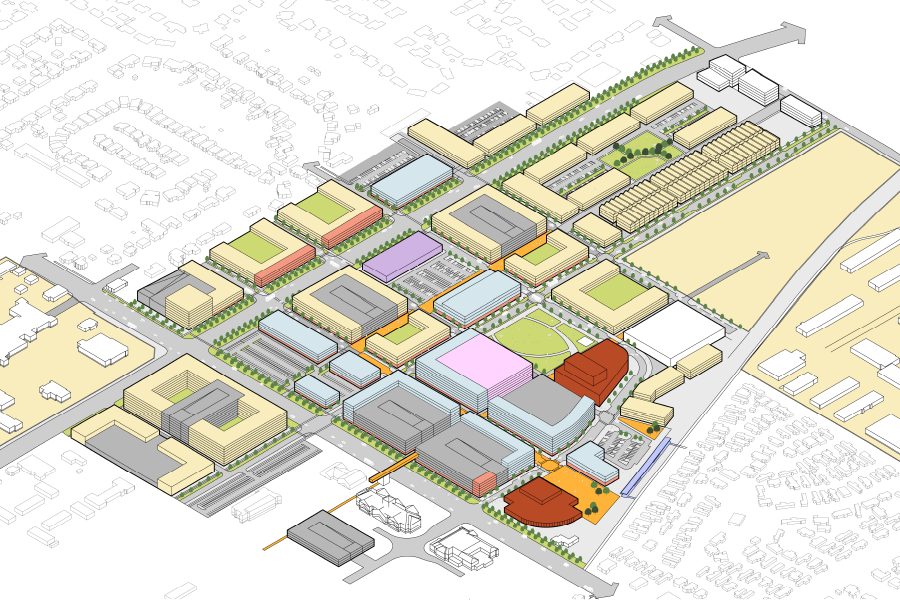Equitable Urbanism: Connecting Communities Through Thoughtful Design
In recent decades, transit options in the American West have expanded, offering commuters greater flexibility in their preferred mode of transportation. In many instances, however, these systems were built along or adjacent to existing rail infrastructure that historically has low-density development and infrastructure-heavy land uses. For this reason, many transit stations lack walkability, community gathering spaces, vibrant residential and commercial uses, and a true sense of place—leaving transit users without accessible, lively hubs that support their daily lives. At Design Workshop, we challenge this status quo by asking a critical question: How do we transform these overlooked spaces into thriving, connected communities?
Chris Geddes, Principal at Design Workshop, is leading efforts to answer this question by reimagining station areas and transit hubs as catalysts for community identity and growth. His work has reimagined isolated, underutilized spaces into dynamic urban centers that foster connectivity, economic vitality, and a sense of belonging.

Downtown Odgen, Utah
Looking Ahead: The Future of Equitable Urbanism
The nationwide housing crisis has pushed cities to rethink land use, especially publicly controlled land that can serve broader community benefits. Utah is leading the way with forward-thinking policies, requiring every city with a transit stop to develop a station area plan within a half-mile radius to support housing diversity and affordability.
Most existing transit stations are surrounded by underutilized Park and Ride lots, which offer immense potential for transformation. By replacing these desolate spaces with mixed-use developments that include housing, retail, and public amenities, we can create more sustainable, connected urban environments. The challenge ahead is shifting public perception—helping people see transit-oriented development not as a disruption but as an opportunity for a more vibrant, livable future.
Transforming Station Areas into Community Hubs
“Station area planning across Utah is unlocking new opportunities for communities,” says Geddes. A few of these projects include:
Ogden Union Station, Utah
In partnership with Utah Transit Authority (UTA), the city, and a private developer, Design Workshop is helping to redevelop 30 acres of underutilized land adjacent to one of the nation’s most historic rail stations. Once surrounded by vacant space, the area is now positioned for vibrant, transit-oriented growth while honoring its deep historical roots.
West Jordan, Utah
One of Utah’s largest cities lacked a true downtown with lands adjacent to their civic center and primary transit station dominated by warehousing and industrial uses. By bringing together the city and UTA, Design Workshop helped leverage 180 acres of land to establish a mixed-use community center, creating a vibrant hub where none existed before.
Springville, Utah
Located 45 minutes south of Salt Lake City, Springville is one of the next communities expected to see rail transit service in the next decade. With the expectation of rail and a single land-owner controlling most of the future station area, Design Workshop worked with the property owner and community to envision a new village center that supports a mix of housing types and public amenities, setting the stage for sustainable growth.

Downtown Odgen, Utah

West Jordan, Utah
Addressing the Challenges of Equitable Urbanism
Creating a comprehensive station area planning for future generations comes with challenges. Many communities are resistant to increased density, and are concerned about traffic, homelessness, and changes that may disrupt their way of life. At Design Workshop, we address these concerns through proactive community engagement—listening, educating, and co-creating solutions with residents.
For example, in Spanish Fork, Utah, rapid growth is inevitable, but residents needed reassurance about how density would be introduced. Through open dialogue, scenario planning, and clear communication, we helped the community visualize where and how development could enhance their city, ensuring new housing and retail were thoughtfully integrated with transit infrastructure.
Designing for People First
At its core, urban planning should prioritize people. When integrating multimodal connectivity, public spaces, and housing, the key is convenience—creating places that people want to visit, spend time in, and feel connected to. Transit hubs should not just be pass-through spaces but destinations that foster social connections and enhance the daily experience of residents.
A strong example of this is our interactive engagement approach, which includes surveys, open houses, and programming activities designed to empower communities. In Draper, Utah, we are listening to residents’ concerns about gentrification and rising property values. By emphasizing affordability and designing with inclusivity in mind, we will work collaboratively with the city and UTA to provide solutions that align with the community’s needs to create a roadmap for positive change.